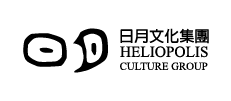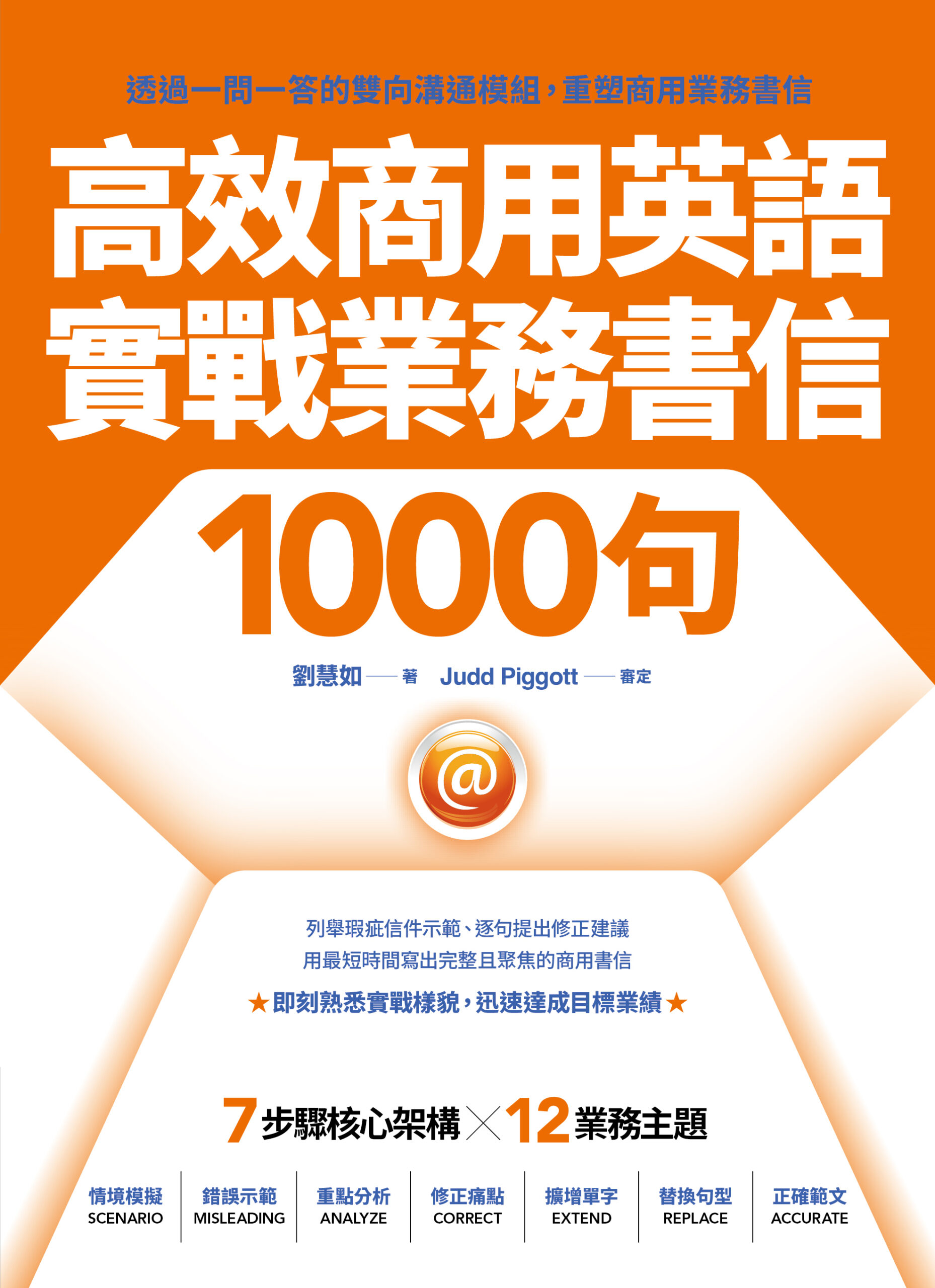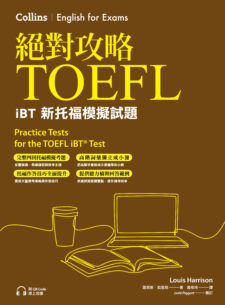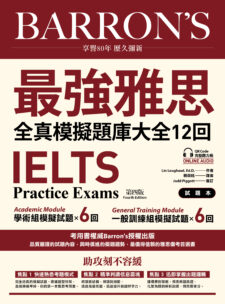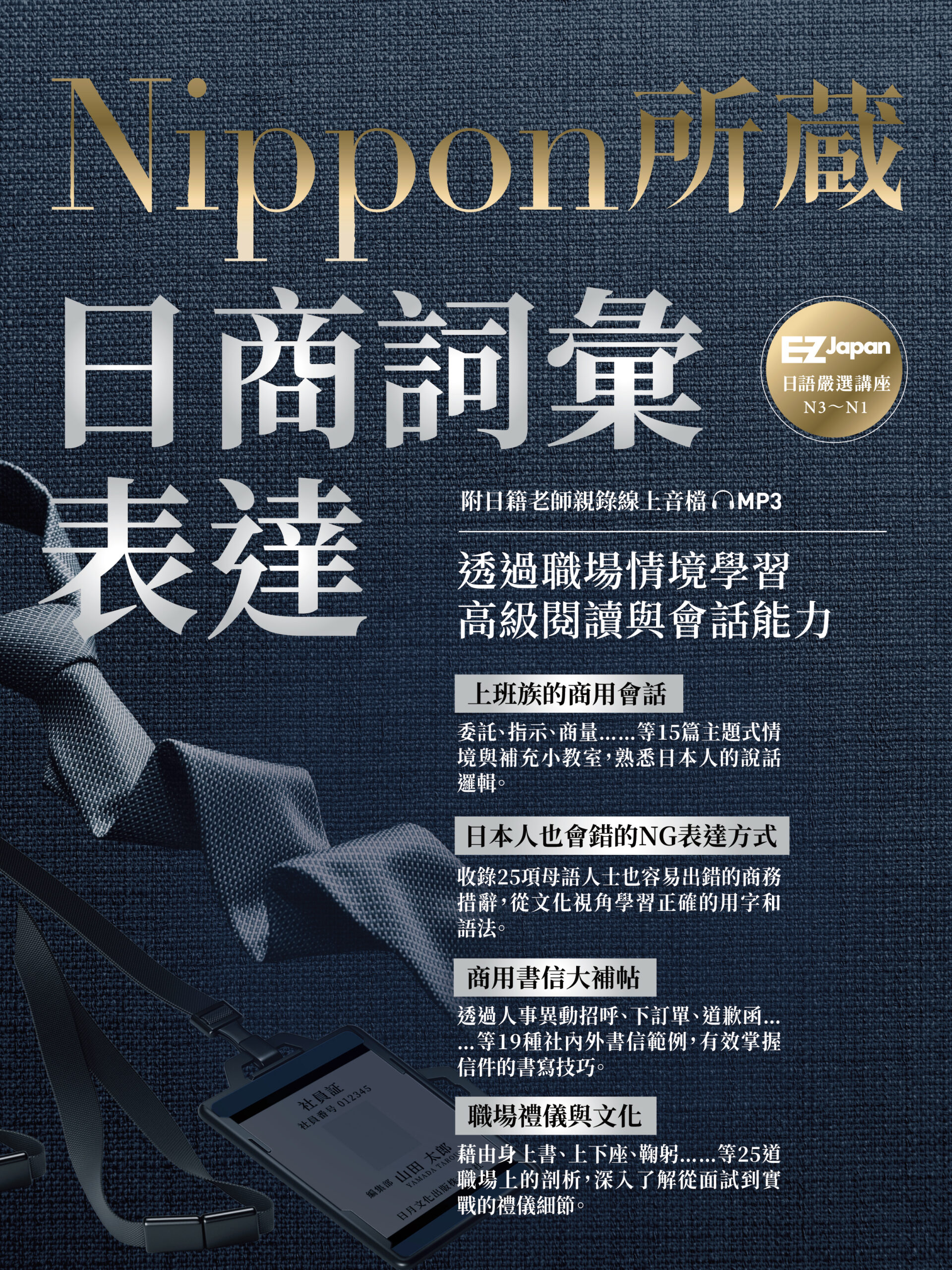
絕對攻略TOEFL iBT新托福字彙與文法(附QR Code線上音檔)
作者:英格莉.維胥尼艾斯卡
譯者:張家瑞
出版社:EZ叢書館
出版日期:2025/09/04
類別:語言學習> 語言能力檢定測驗> TOEFL托福
原文書名:Vocabulary and Grammar for the TOEFL iBT® Test: (Third edition) (Collins English for the TOEFL Test)
ISBN/條碼:9786267776070
定價:420
更多書籍介紹
全球知名英文學習書出版社Collins授權出版
本書完全符合托福考試新制
Collins《絕對攻略托福系列》
本書讓你學完字彙和文法,馬上進入三道題連刷模式,
從練習到模考一路到底,保證記得住、考場上會用,短期突破托福100+必備!
聽說讀寫全都顧到,托福題型完整對應
20個學科主題字彙× 20個關鍵文法 × 67個字首字根字尾
一本抵兩本,字彙+文法一次搞定!
四大特色
特色一:透過字首字根字尾學習,各學科單字一次攻克
不用再硬背單字表,書中把常考單字依各學科分類,搭配例句,加上字首字根字尾教學法,幫你一次記憶一組單字,理解力+閱讀速度直接升級!
特色二:涵蓋托福必考文法,學了快速拿高分!
情態動詞、轉折詞、轉述句……,這些文法不是只考一次,是托福多類題型都會出現!本書幫你分類整理+實戰應用,考場遇到直接反應,立即搶分!
特色三:高效備考策略,教你掌握應考技巧!
書中提供大量應考技巧,像是告訴考生各種引述動詞(state、indicate、present)後面的結構、轉折詞出現的位置與時機(Unlike、In addition、Consequently),以及一直搞不清楚的關係代名詞。
特色四:學完馬上做練習題和模擬試題!
單字文法學完馬上做練習題,練習題做完再用托福題型驗收,聽說讀寫皆涵蓋,文章比真的托福測驗題目略短。不只理解,更要記住和活用!
名人推薦
陶維極│美加英語留學中心資深托福教師
彭湘平│「彭湘平英文」留學英文教室創辦人
(按姓氏筆畫順序)
*本書音檔由 EZ Course 平台(ezcourse.com.tw)提供。購書讀者須註冊會員、完成信箱認證、並完成書籍問答認證的免費訂閱程序後,即可免費收聽音檔。音檔限本人使用,請勿轉載或提供他人。
作者簡介
英格莉.維胥尼艾斯卡 Ingrid Wisniewska
英格麗.維胥尼艾斯卡在牛津大學學習語言,並擁有語言教育博士學位。她曾在日本、歐洲和美國教授學術英語和托福準備課程,並為學生和教師編寫了各樣的英語教學教材。
審訂者簡介
Judd Piggott
美國加州柏克萊大學中文系畢業,EZ叢書館總編審,曾任國家中央圖書館編譯、《光華雜誌》翻譯、時代雜誌《TIME Express》總編審、留學代辦中心翻譯。
譯者簡介
張家瑞
畢業於臺灣大學外文系,是位熱愛文字工作的兼職譯者。投入翻譯領域十多年,翻譯作品有《雅思口說教戰手冊》、《絕對攻略TOEFL iBT新托福閱讀+寫作》、《絕對攻略TOEFL iBT新托福聽力+口說》。
音檔使用說明
題型索引
推薦序
關於本書
Part 1 字彙
Arts藝術
Unit 1 Vocabulary: Visual art and architecture 字彙:視覺藝術與建築
Unit 2 Vocabulary: Literature字彙:文學
Unit 3 Vocabulary: Music and dance字彙:音樂與舞蹈
Unit 4 Vocabulary: Comparing and contrasting字彙:比較異同
Life Science 生命科學
Unit 5 Vocabulary: Biology字彙:生物
Unit 6 Vocabulary: Medicine and healthcare字彙:醫學與健康照護
Unit 7 Vocabulary: Animal behavior字彙:動物行為
Unit 8 Vocabulary: Opinions字彙:意見
Social Science 社會科學
Unit 9 Vocabulary: History字彙:歷史
Unit 10 Vocabulary: Business and economics字彙:商業與經濟
Unit 11 Vocabulary: Sociology and archeology字彙:社會學與考古學
Unit 12 Vocabulary: Cause and effect字彙:因果關係
Physical Science 自然科學
Unit 13 Vocabulary: Technology and computers字彙:科技與電腦
Unit 14 Vocabulary: Climate and environment字彙:氣候與環境
Unit 15 Vocabulary: Chemistry, physics, astronomy字彙:化學、物理與天文學
Unit 16 Vocabulary: Reporting verbs字彙:引述動詞
General Topics 一般主題
Unit 17 Vocabulary: College campus vocabulary字彙:校園字彙
Unit 18 Vocabulary: Prepositions字彙:介系詞
Unit 19 Vocabulary: Paraphrasing字彙:改述
Unit 20 Vocabulary: Prefixes and roots字彙:字首與字根
Part 2 文法
Key grammar for the independent writing and speaking tasks
獨立寫作與口說題的關鍵文法
Unit 1 Grammar: Review of verb forms 文法:複習動詞形態
Unit 2 Grammar: Review of articles文法:複習冠詞
Unit 3 Grammar: Subject-verb agreement文法:主詞動詞一致性
Unit 4 Grammar: Comparative structures文法:比較結構
Unit 5 Grammar: Modals (present and future) 文法:情態動詞(現在式與未來式)
Key grammar for the integrated tasks (speaking and writing sections)
整合題的關鍵文法(口說與寫作部分)
Unit 6 Grammar: Conditional sentences文法:條件句
Unit 7 Grammar: Transition words and phrases文法:轉折詞與片語
Unit 8 Grammar: Reported speech (1) 文法:轉述句 (1)
Unit 9 Grammar: Reported speech (2) 文法:轉述句 (2)
Unit 10 Grammar: Gerunds and infinitives文法:動名詞與不定詞
Key grammar for the reading and listening sections 閱讀與聽力部分的關鍵文法
Unit 11 Grammar: Reference words文法:指代詞
Unit 12 Grammar: The passive文法:被動語態
Unit 13 Grammar: Conjunctions文法:連接詞
Unit 14 Grammar: Relative clauses文法:關係子句
Unit 15 Grammar: Office hours conversations文法:在校輔導時間對話
Key grammar for all sections 所有部分的關鍵文法
Unit 16 Grammar: Causatives文法:使役動詞
Unit 17 Grammar: Introductory there and it文法:引導詞there與it
Unit 18 Grammar: Paraphrasing文法:改述
Unit 19 Grammar: Nominalization文法:名詞化
Unit 20 Grammar: Common errors文法:常見錯誤
Unit 21 Writing question 2 academic discussion task for the computer-based test
電腦版測驗的學術討論題-寫作題2
托福網路測驗概述
Answer Key and Translation解答與翻譯
Audio Script聽力稿
Word List 字彙表
序
這本書的適用對象是誰?
本書旨在為準備參加托福網路測驗的學生提供輔助工具,書中為考試每一部分所需的詞彙和文法做了簡要的介紹。
為何字彙和文法在托福測驗中很重要?
字彙:對於一般學術字彙的充分掌握,在托福的四個部分裡都很重要。閱讀和聽力部分均有特定的字彙題,用來測驗考生對上下文中字彙的理解能力。口說部分的評分標準包括「有效運用字彙」,而寫作部分則包括「適當的用字選擇與表達習慣」。在口說和寫作部分,考生需要閱讀學術文章、聆聽講座內容,並用自己的話來改寫改述或概述。除了熟悉學術字彙外,考生也要能透過上下文來推測不熟悉的單字的意思,並且能運用字根、字尾及字首來分析單字的含義。
文法:雖然 TOEFL iBT 測驗中沒有針對文法的特定題型,但對英文句子結構的了解,以及理解與運用各種文法結構的能力,對於測驗的所有部分都是必要的。在口說測驗中,你應該能夠自信地說話,且不出現明顯的文法錯誤,以免影響語意。根據口說評分標準,考生應該能「有效運用文法」,並展現出「對基本與複雜句型具有良好掌控力,語言運用相當流暢自動」。寫作部分:考生應表現出「熟練的語言運用能力,展現句法多樣性、適當的字彙選擇與表達習慣」。閱讀與聽力部分:對文法結構的良好理解,亦是讀/聽懂段落內容和答題的基礎。
本書收錄了哪些字彙?
本書中的字彙是根據以下兩項標準篩選的:
1. 主要學術主題領域:包括藝術、生命科學、社會科學及物理科學。雖然不要求考生具備專業的學科知識,但考生需要對這些學術領域中常用的專門詞彙具有良好的理解。本書提供的字彙並非考生所需學習的一切字彙,但能幫考生在各領域的詞彙擴充提供一個起點。
2. 學術詞彙表。這份囊括570個單字的清單,涵蓋了學術環境中最常用的詞彙。此清單從多種學科的學術文章範例篩選而來,主要包括各領域中常用的通用學術詞彙,它並不包含特定學科的專門詞彙。取得學術詞彙表的方式有:搜尋AWL headwords Victoria University of Wellington,或者到 www.victoria.ac.nz/lals/resources/academicwordlist/awl-headwords。
此外,本書也幫助考生培養學習字彙技巧。書中的「字詞解析」與「擴充詞彙」 方框,能幫助考生注意單字的字根、字首及字尾,以便擴充字彙量。 「學習要領」和TEST TIP方框則提供策略,幫助考生將學習效率提升到最高,並教考生應付特定考試題型的方法。
本書涵蓋哪些文法內容?
本書的文法重點是從測驗中最有助於考生獲得高分的文法裡挑選出來的。如果你想要拿到高分,必須具備整體良好的文法正確性。同時,你也需要針對測驗中的特定題型,掌握相關的文法項目。
本書如何幫助我準備測驗?
除了幫助您學習和練習托福測驗所需的字彙和文法,本書也幫助您熟悉測驗中的題型。每課都包含與測驗類似的題目,文章比真的托福測驗題目更短且更容易理解。本書涵蓋了測驗中的所有題型,並結合不同學術背景供您練習。如果您能掌握各類題型的特性及答題要求,便能在托福考試中成功取得高分。
推薦序
知彼知己,百戰百勝。要考TOEFL、IBT,第一個要了解的是,這不只考英文能力,也考考試能力。英文能力是基本條件,但是要考高分,還需要了解考試。
本猩從前在語言訓練測驗中心擔任教師、副教務主任,設計全民英檢的雛形。從托福現場監考官,到負責一區的總考官;後來到全美留學中心,然後在美加留學英語中心教了三十年以上,教托福聽說讀、GRE、GMAT、SAT字彙閱讀,並編寫教材。
托福考高分,一定英文很厲害嗎?不一定。很多英文很好的人考托福分數不高,但考高分的,先做功課,了解考試,掌握重點,熟悉題目。
可是如何下手?
各位喜歡考試嗎?很少人喜歡。所以不要浪費時間繞圈子、做很多不必要的準備。給大家介紹Ingrid Wisniewska著《絕對攻略TOEFL iBT新托福字彙與文法》,讓您減少煩惱、知道怎麼應考、順利過關。
本書介紹考試範圍、要點,內容充實、切中要害,且簡單明暸,有頭緒,容易吸收。「學習要領」、「字詞解析」、「Test Tip」等提出要點,所以要注意看!編排清爽易讀,準備考試時近視不會加深。
大家頭痛的英文字彙、文法的關鍵在於範圍。畢竟托福、IBT考的是現在通行實用英語,不考十七世紀的英文。可是臺灣現行的英語教學焦點模糊,所以考生面臨的問題是,哪些是現在的字、句型?哪些重要?哪些要知道?哪些可以不管?《絕對攻略TOEFL iBT新托福字彙與文法》教的都是考試可能出現的,不出古字怪句。只要充分練習書中的內容,差不多就能了解考試內容的英文。
至於怎樣背單字呢?大聲念!不管發音對不對,一個字大聲念個二十次,複習三天,差不多知道了。英文拼音太棘手,平常可以不過問。先把字記在腦中、耳中、口中,才是準備考試的要務。
您手上這本書提供很多習題,可以加強英文能力的同時熟悉考試內容。翻譯精準,請放心閱讀、練習。
但本猩提醒讀者,準備考試不是呆呆坐在書桌前看書。別想抱佛腳:平時練習,考前一週放鬆一點。考試很耗神,所以睡眠要充足。考前一天,晚餐吃好一點的,準時休息,睡飽最重要!考試很緊張,對吧?所以計畫早點到考場,以免精神壓力太大。畢竟考試報名費不便宜,不要花錢買罪受;讀了《絕對攻略TOEFL iBT新托福字彙與文法》,愉悅應考,順利過關。
祝大家考試愉悅!
洋猩陶維極 G B Talovich
臉書洋猩英語學堂 本猩
美加英語留學中心 教授
「你絕對用得上的英文寫作」作者
托福向來就是個很「學術導向」的英文檢定考,除了一些校園生活對話之外,大概有80%的題目都涉及各類學科,彷彿考生人人都要上知天文、下知地理,再加上深厚的文史藝術素養!?
這也就是為什麼Collins授權的這本書讓教了20年托福的我眼睛一亮!
除了把各類學科分得更細緻(像是藝術史就更細分成建築、文學、音樂、舞蹈等),不同學科在聽、說、讀、寫個部分被考出來的方式也一併融入,甚至加入一些解題的搭配模板,這表示作者編輯對托福考試真的很了解。
另外讓人很驚艷的是文法補充的選材很到位—因為準備托福考試的同學,已經不一定有時間從零開始回顧字詞、片語、子句還有各種特殊句型等文法觀念。我自己上課時也主要是採取補強的做法,看同學們文法哪裡容易出錯就補強哪裡。
可是這本書很精準的針對托福最實用的介系詞、轉折語,因果關係、意見等表達方式做加強,再次顯示出作者對托福考生所需要具備的能力很清楚。可以在不同學科章節之間穿插補充,讓大家只需要跟著書本編排的順序前進即可,不用苦惱要怎麼安排進度。
雖然2026年一月iBT托福有了巨大的改制,每一個科目的出題方式都有所調整,但是最根本的學科單字、文法難度並不會改變,所以這本書還是有高度的參考價值。在這裡我就以資深托福老師的角度來稍微建議大家可以怎麼使用這本書!
<<單字部份>>
如果時間足夠,真心推薦同學每一個單字主題章節都看!在認識這些學科單字的同時,注意書中表格裡呈現的「例句」(讓我們認識到單字怎麼使用),還有練習題裡頭的「同義字詞代換」(托福考試很重視「換句話說」和「換字」能力、「字首字根」(方便我們觸類旁通擴充單字量)。
如果時間不太夠,則建議大家挑選每個主題的第一章,譬如生物學部分就先看biology,先跳過細項的動物行為等。而且如果時間不夠,Part 1部分的文法看完就好,Part 2更細部的文法解說,就挑自己不熟悉的看即可。
<<題型部分>>
這是此書很用心的部分,因為每個章節都會有不同的練習方式,不會千篇一律,練起來不無聊。而且閱讀文章由段落和短篇開始,不會讓人難以下嚥。章節之間也多半有「學習要領」補充,會給介紹一些好用的參考網站,非常貼心。搭配音檔的部分也不要放過,因為托福真的很多部分考聽力!聽到單字也要能夠立刻知道意思,這才能夠應付考試喔。
<<文法部份>>
剛才提到,同學們要看哪些文法點自己比較不熟,可以透過這本書的介紹,或是進一步找資料學習。但是更重要的是托福考試重視「文法的正確使用」,所以我很愛這部分的練習題設計,不是無聊的選擇題,而是請同學改寫文章,注意怎麼寫出正確句子去表達自己的意思等等。這樣一來,就更能夠確定自己是否了解這個文法了。所以老話一句:不要只是看懂,而是要實際練寫和錄音喔。
不管是自修托福,或是搭配托福課程,這本書都非常值得擁有,因為資料量真的太豐富了!可以幫助大家強化托福單字能力和文法能力,非常推薦喔!
彭湘平│「彭湘平英文」留學英文教室創辦人
| 頁碼 | 原書誤植內容 | 更正內容 | 備註 |
| 2 | Unit 2 Vocabulary: Literature 字彙:文學 16 | Unit 2 Vocabulary: Literature 字彙:文學 20 | 頁碼錯誤 |
| 2 | Unit 9 Vocabulary: History字 彙:歷史 60 | Unit 9 Vocabulary: History字 彙:歷史 62 | 頁碼錯誤 |
| 2 | Unit 10 Vocabulary: Business and economics 字彙:商業與經濟 68 | Unit 10 Vocabulary: Business and economics 字彙:商業與經濟 70 | 頁碼錯誤 |
| 2 | Unit 11 Vocabulary: Sociology and archeology 字彙:社會學與考古學 74 | Unit 11 Vocabulary: Sociology and archeology 字彙:社會學與考古學 76 | 頁碼錯誤 |
| 2 | Unit 12 Vocabulary: Cause and effect 字彙:因果關係 80 | Unit 12 Vocabulary: Cause and effect 字彙:因果關係 82 | 頁碼錯誤 |
| 3 | Key grammar for the independent writing and speaking tasks
獨立寫作與口說題的關鍵文法 138 |
Part 2 文法 138 | 頁碼對應的標題錯誤 |
推薦閱讀
